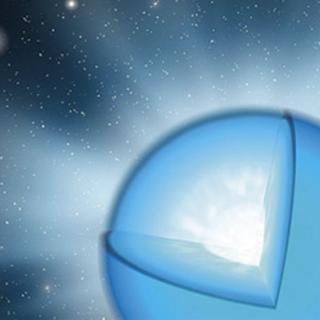Bibcode
Almeida, L. A.; Sana, H.; de Mink, S. E.; Tramper, F.; Soszyn´ski, I.; Langer, N.; Barbá, R. H.; Cantiello, M.; Damineli, A.; de Koter, A.; Garcia, M.; Gräfener, G.; Herrero, A.; Howarth, I.; Maíz Apellániz, J.; Norman, C.; Ramírez-Agudelo, O. H.; Vink, J. S.
Referencia bibliográfica
The Astrophysical Journal, Volume 812, Issue 2, article id. 102, 9 pp. (2015).
Fecha de publicación:
10
2015
Revista
Número de citas
64
Número de citas referidas
56
Descripción
The contact phase expected to precede the coalescence of two massive
stars is poorly characterized due to the paucity of observational
constraints. Here we report on the discovery of VFTS 352, an O-type
binary in the 30 Doradus region, as the most massive and earliest
spectral type overcontact system known to date. We derived the 3D
geometry of the system, its orbital period
{P}{{orb}}=1.1241452(4) day, components’ effective
temperatures—T1 = 42 540 ± 280 K and
T2 = 41 120 ± 290 K—and dynamical
masses—{M}1=28.63+/- 0.30 {M}ȯ and
{M}2=28.85+/- 0.30 {M}ȯ . Compared to
single-star evolutionary models, the VFTS 352 components are too hot for
their dynamical masses by about 2700 and 1100 K, respectively. These
results can be explained naturally as a result of enhanced mixing,
theoretically predicted to occur in very short-period tidally locked
systems. The VFTS 352 components are two of the best candidates
identified so far to undergo this so-called chemically homogeneous
evolution. The future of VFTS 352 is uncertain. If the two stars merge,
a very rapidly rotating star will be produced. Instead, if the stars
continue to evolve homogeneously and keep shrinking within their Roche
Lobes, coalescence can be avoided. In this case, tides may counteract
the spin down by winds such that the VFTS 352 components may, at the end
of their life, fulfill the requirements for long gamma-ray burst (GRB)
progenitors in the collapsar scenario. Independently of whether the VFTS
352 components become GRB progenitors, this scenario makes VFTS 352
interesting as a progenitor of a black hole binary, hence as a potential
gravitational wave source through black hole–black hole merger.
Proyectos relacionados

Propiedades Físicas y Evolución de Estrellas Masivas
Las estrellas masivas son objetos claves para la Astrofísica. Estas estrellas nacen con más de 8 masas solares, lo que las condena a morir como Supernovas. Durante su rápida evolución liberan, a través de fuertes vientos estelares, gran cantidad de material procesado en su núcleo y, en determinadas fases evolutivas, emiten gran cantidad de
Sergio
Simón Díaz